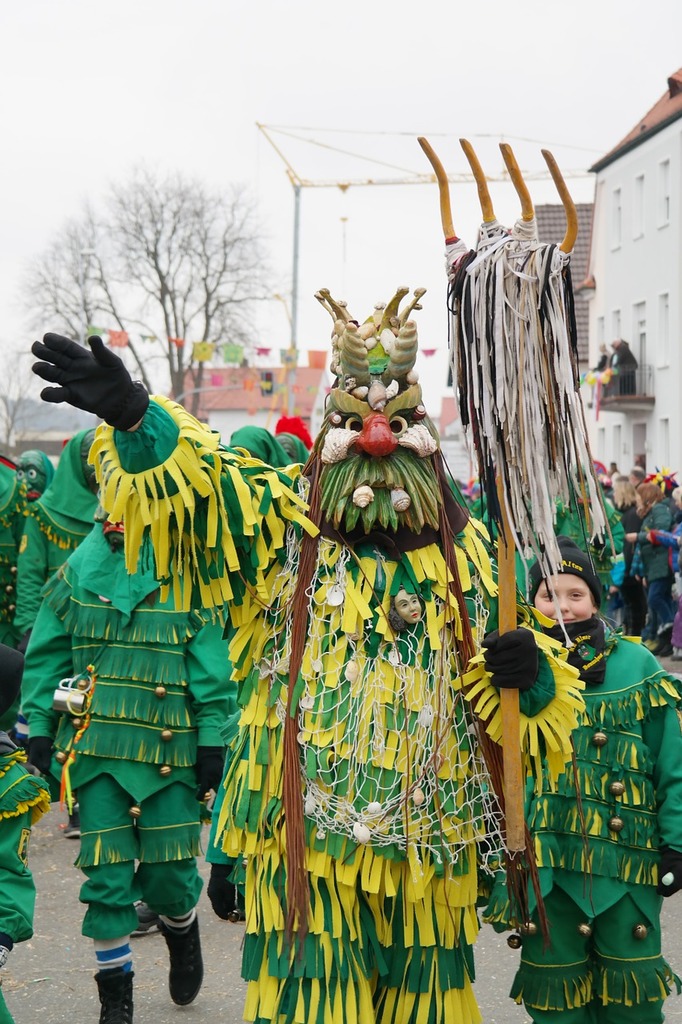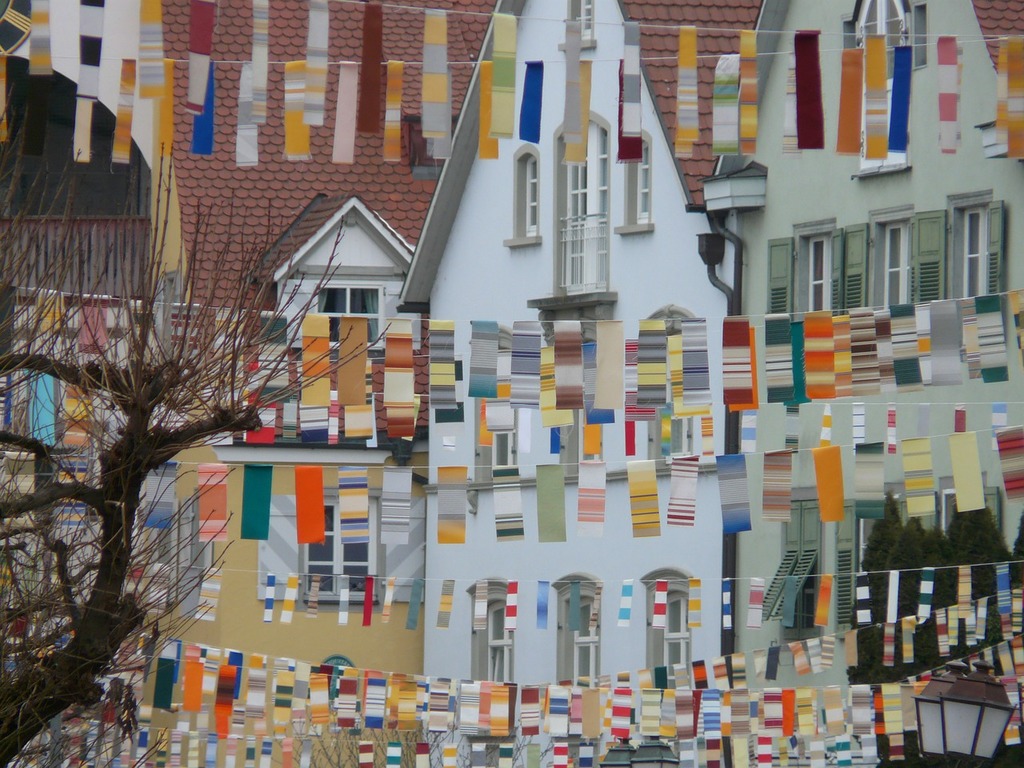European Traditions and Culture
Around Carnival and Lent

One of the things that never cease to amaze me when I travel or visit other cultures is the list of factors that tie us together. As an American, I was nourished on a leftover casserole culture: lifting bits and layers from rituals and customs I encountered to discover that this originated from one country, that from another part of the world, and so on. It’s very much like examining a casserole concocted from a week’s leftovers: Oh, there’s Monday’s dinner, and that was Thursday. (Now American because it’s smothered in Campbell’s Cream of Mushroom soup and topped with cornflakes: the unique equivalent of the American apple pie and baseball.)
Traditionally, a Carnival feast was the last opportunity for common people to eat well, as there was typically a food shortage at the end of the winter as stores ran out. Until spring produce was available, people were limited to the minimum necessary meals during this period. On the days before fasting, all the remaining winter stores of lard, butter, and meat which were left would be eaten, for these would otherwise soon rot and decay.
My Carnival celebration in the U.S. (always followed by a strict fast for me) consisted of going to the hottest club on Mardi Gras and maybe wearing some flimsy mask if the bar was handing them out. In the meantime, my friends and I wished to visit New Orleans (or Rio de Janiero, in my case) for an authentic Mardi Gras. I got the opportunity in Austria, however, and experienced flavors of the Middle Ages on my first carnival tour. Subsequent visits and experiences followed when I was in Ukraine and then in Catalan, as well as in Venice and in Croatia. These Carnival outings again proved how beliefs and rituals can migrate across borders and destroy language barriers.
Here’s a guide to some of those unique and similar flavors:

South Tyrol
Carnival has a long tradition in South Tyrol. Against the unique backdrop of the Dolomites and the valleys still covered in snow, there are countless events for revelers, young and old alike, which take place on Fat Thursday (known as Unsinniger Donnerstag) and Shrove Tuesday.
The highlight of Fat Thursday is the Zusslrennen: in Prato/Prad on the Stilfserjoch ridge, figures dressed in white, adorned with flowers and colourful ribbons, come together for the procession. They strap on cowbells, which ring out with every step, the purpose of which is, according to ancient legends, to expel the dark winter and re-awaken spring and the sun.
The Scheibenschlagen, which takes place on the first Sunday of Lent, is also a custom intended to drive out the winter. Pieces of wood are attached to long rods and held in the fire until they glow. Then they are hurled from a mountainside into the night, and this is how the darkness and coldness of the last nights of winter are driven out. In Vorarlberg, where I now live, the first Sunday of Lent is the traditional Funken. It’s a huge, towering bonfire made of palettes and last Christmas’s trees. At the top, the effigy of a witch with fireworks stuffed into her head, is placed on top and we wait for her to burn and…well, pop. (It truly is a bit macabre.)
On Shrove Tuesday, on the other hand, the Egetmann parade is held every odd year. This remarkable carnival custom, the oldest in the whole of the Alps, takes place in the narrow streets of Termeno/Tramin where eerie figures walk in procession and then all assemble. They symbolize the various aspects of the season during which winter loses its power.
They stomp, scream, laugh and startle: The so-called Zussln and Egetmänner are typical figures of the traditional South Tyrolean Carnival and they play a very important role by chasing away the cold winter and wicked ghosts to welcome spring.

Kurentovanje
One of Slovenia’s most popular and ethnologically significant carnival events. This 10-day rite of spring and fertility is celebrated on Shrove Sunday in Ptuj, the oldest documented city in the region, and draws around 10,000 participants each year.
Its main figure, known as Kurent has been popularly (but incorrectly) reinterpreted as an extravagant god of unrestrained pleasure and hedonism in early Slavic customs. In today’s festival, groups of kurents wear traditional sheepskin garments while holding wooden clubs with hedgehog skins attached called ježevke, the noise of which is believed to “chase away winter”.

Belgium
The Gilles are the oldest and principal participants in the Carnival of Binche in Belgium. They go out on Tuesday from 4 am until late hours and dance to traditional songs.
Around 1000 Gilles, all male, some as young as three years old, wear the traditional costume of the Gille on Shrove Tuesday. The outfit features a linen suit with red, yellow, and black heraldic designs (the colours of the Belgian flag), trimmed with large white-lace cuffs and collars. The suit is stuffed with straw, giving the Gille a hunched back. The Gilles also wear wooden clogs and have bells attached to their belts. In the morning, they wear a mask of a particular design. After reaching the town hall, they remove these masks—they are not worn in the afternoon. During the afternoon parade, they throw blood oranges to (and sometimes at) the crowd, and some of the Gilles wear large, white, feathered hats. They carry ramons, tied bunches of twigs, and baskets in which to carry the oranges Their sticks are said to ward off evil spirits.

Croatia
Just before the end of Carnival, every Kvarner town burns a man-like doll called a Pust, who is blamed for all the strife of the previous year. The Zvončari, or bell-ringers push away winter and all the bad things in the past year and calling for spring. They also wear bells and large head regalia representing their areas of origin (for example, those from Halubje wear regalia in the shape of animal heads).

Germany
Carnival Thursday is also called “Old Women Day” or “The Women’s Day” in commemoration of an 1824 revolt by washer-women. Women storm city halls, cut men’s ties, and are allowed to kiss any passing man. Special acrobatic show dances in mock uniforms are a traditional contribution to most festive balls. They may or may not have been a source of inspiration to American cheerleading. The Fasching parades and floats make fun of individual politicians and other public figures. Traditions often also include the Faschingssitzung – a sit-only party with dancing and singing presentations, and often many speeches given that humorously criticize politics.
“Swabian-Alemannic” Carnival (Schwäbische Fastnacht)
The “Swabian-Alemannic” Carnival, known as Schwäbische Fastnacht, takes place in southwestern Germany and Austria (where I live). Often the costumes and masks on parades strictly follow traditional designs and represent specific historical characters, public figures – or specific daemons.

Swiss Fasnacht
On the other border to where I live, in Switzerland, Fasnacht takes place in the Catholic cantons of Switzerland, e.g. in Lucerne (Lozärner Fasnacht), but also in Protestant Basel. However, the Basler Fasnacht begins on the Monday after Ash Wednesday. Both began in the Late Middle Ages. Smaller Fasnacht festivities take place across German Switzerland.
One of the most unique aspects in my area, in Vorarlberg, Schwaben and in the immediate Swiss and Liechtenstein regions is Gugga Musik. Brass bands play a cacophony of music with huge drums, marching through the streets in incredibly elaborate costumes and make-up. They even have clubs that compete against one another.
Carnival festivities are part of human history all over the world and all continents. It is a festival of light and fire that has been part of human beliefs since before pre-history. It was a way for humans to try to understand and control nature with the realization that there are seasons of death and rebirth. By celebrating them they could help control their fears.
Special thanks to my mother, Lesya Lucyk, for assisting in the research of this article. A thirsty historian, she will be contributing her help regularly to these historical background features.



